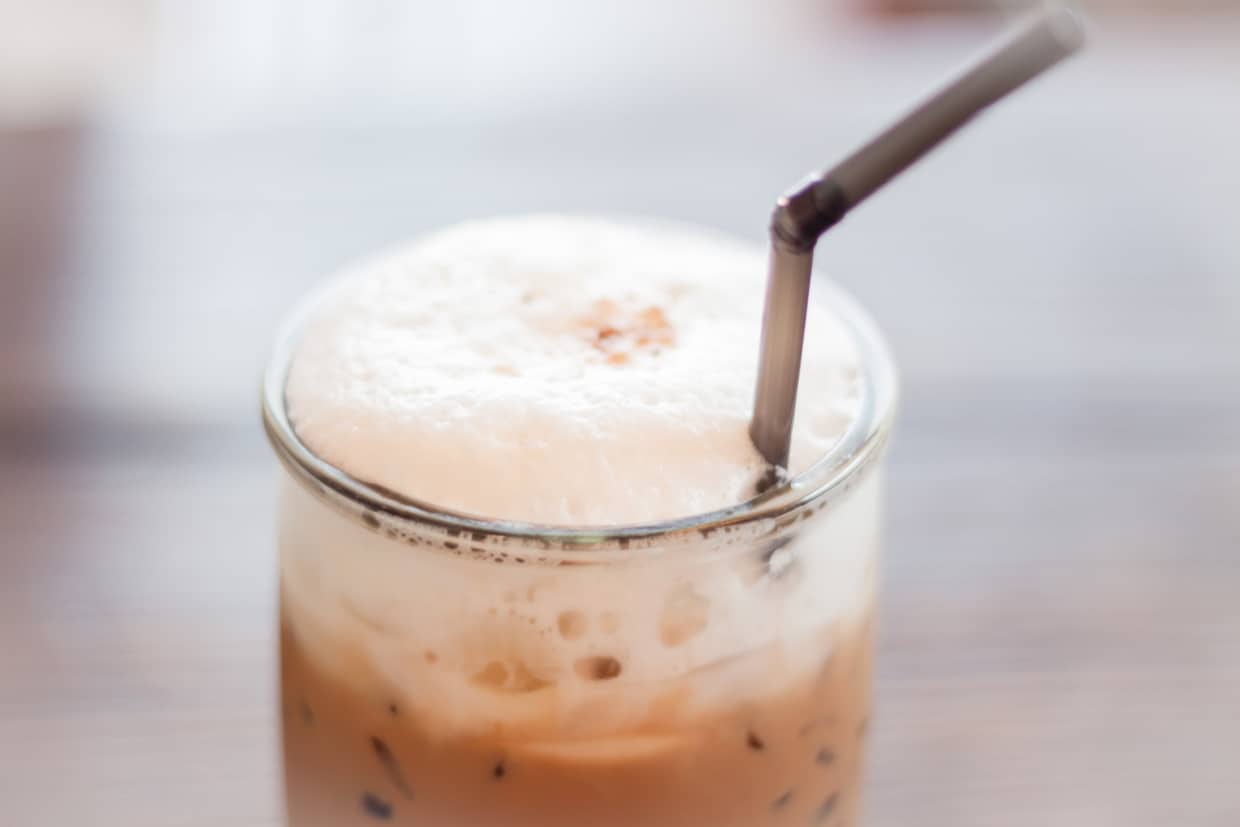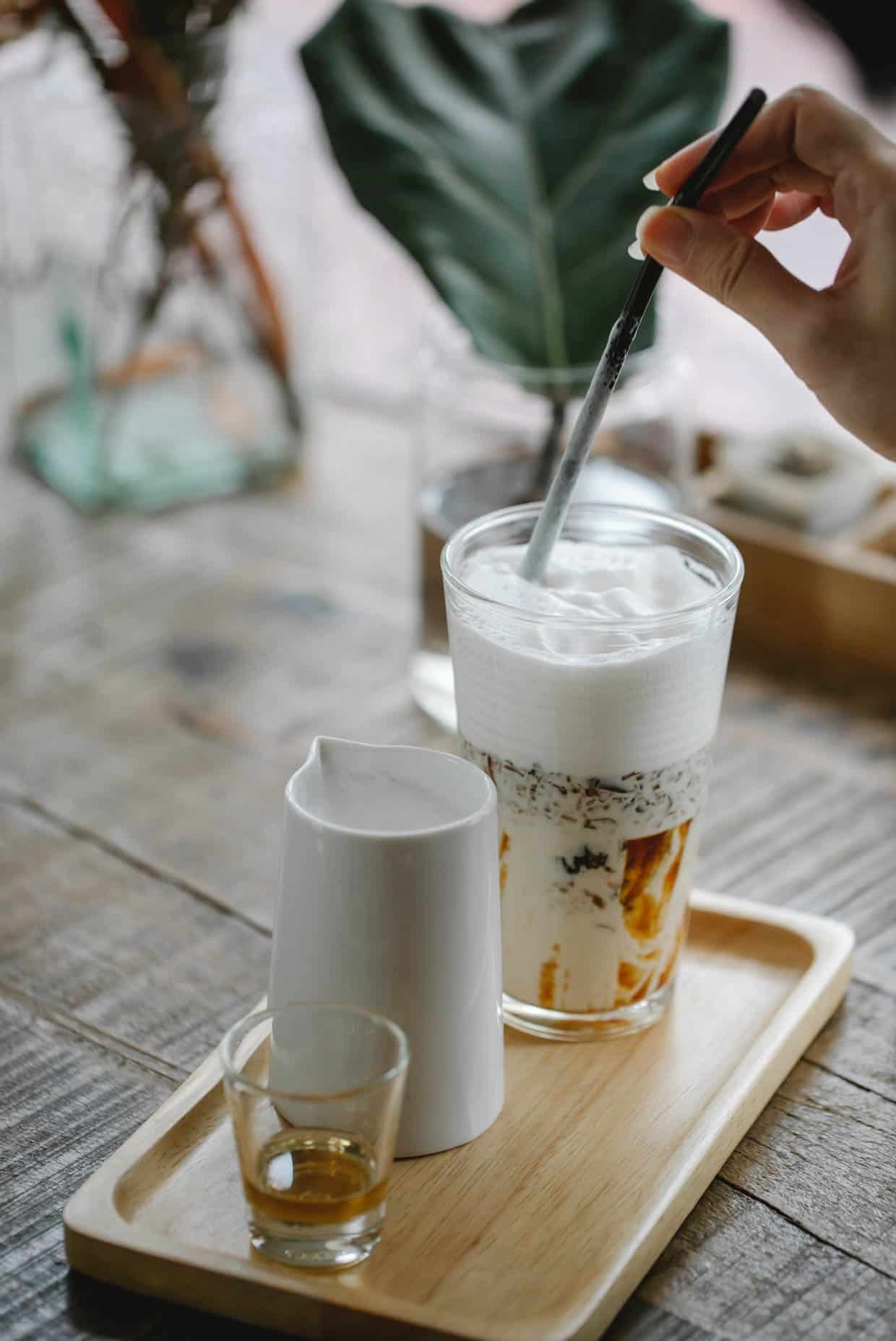Cold foam is a delightful and velvety addition to any drink. Its rise in popularity can be attributed to the mainstreaming of cold coffee drinks like lattes, cold brew and iced teas from trendy coffee shops. The frothy topping is known for its light and airy consistency. It adds the perfect element of luxury without a huge caloric impact.

Whether you’re a long-time fan having fallen hard for this foamy phenom or are simply intrigued to give it a try, the good news is that making cold foam at home couldn’t be easier. This article will walk through how to make it, ways to use it and fun flavor variations to try.
What is cold foam?
Cold foam is essentially just frothed milk. Unlike when made for hot beverages such as cappuccinos, however, it’s frothed without the use of heat or steam. If you try to top a cold drink with hot foam, it will melt into a milky puddle almost instantaneously. This is where cold foam shines.
Without the use of heat, cold foam is thick, creamy and meringue-like in texture, ideal for topping or layering in any cold coffee drink. The foam sits atop the drink and gradually melts into it as you sip.
The best milk for cold foam
Almost counterintuitively, the best froth comes from using nonfat milk. This is true for hot foam as well as cold foam.
The lower percentage of fat in the milk results in a higher percentage of protein. Protein is what gives the foam its structure and helps stiffen it up.
While 1 percent, 2 percent or even whole milk are best for latte art, stick to skim milk when making cold foam for the best results.
Plant-based milks are hit or miss when it comes to frothing. Some, like canned coconut milk, will do well, although even that can be brand specific depending on the ingredients. While others, like almond milk, often fall flat. If dairy is a concern, play around with different alternative types of milk to see which works best.

Making cold foam at home
Learning how to make this coffee topper at home won’t just improve your afternoon pick-me-up but also save you some pennies.
What you’ll need for making cold foam:
- Cold brew coffee
- Nonfat milk
- Milk frother
Optional:
- Syrup or extract
To make the cold foam, make sure to use cold, fresh milk and froth using the gadget of your choice from the list below. Handheld and electric frothers will only take about 20 seconds to create the cold foam.
Spoon the foam over the cold brew coffee or any other cold coffee drink, garnish with a dusting of cinnamon spice or chocolate shavings if desired and enjoy.
Types of milk frothers
Handheld milk frother — This small kitchen gadget is likely the best value. For just about $10 (that’s only eight Starbucks orders of a cold foam add-on) it froths milk with ease in seconds.
Electric milk frother and steamer — This option will take up a little more space on your kitchen counter than a handheld frother but it offers both hot and cold-frothed milk options, albeit at about three times the cost.
French press — Using the plunger on a French press is a great hack for making cold foam without a frothing device. Place the cold milk into the beaker then press the plunger up and down for about 45 seconds until a nice frothy layer forms.
Whisk — Using a whisk is the most budget-friendly but be prepared for an arm workout. Whisking the cold milk by hand will work to create foam but the bubbles are larger and the texture likely won’t be as stiff and creamy as one of the other three options. Nonetheless, it will work in a pinch.
Adding flavor
Syrups and extracts can be used to jazz up cold foam in a variety of ways.
A few drops of any flavoring extract can be added to the cold foam without impacting the consistency. Try a hint of
Syrups are another option for providing extra flavor. A homemade simple syrup can be added to the milk or any store-bought variety. Keep in mind, unless sugar-free, syrups will also add calories whereas extracts do not.
Ways to use cold foam
Now that you’re a cold foam making pro, the possibilities of how to use this creamy indulgent froth are endless. Here is a list of drinks that would be ideal for a cold foam topper:
- Iced coffee and all its variations like this fresh raspberry iced coffee.
- Cold brew coffee
- Iced tea
- Iced cappuccino
- Iced espresso
- Iced latte and matcha latte
- Iced chai latte
- Iced hot chocolate
Beyond the usual coffee shop ideas, cold foam can also be used in other unique ways:
- Pair it with some coconut coffee ice cream or enhance the classic affogato recipe with a spoonful of cold foam on top
- Add it to a cold cocktail like this coconut bourbon coffee nog for extra creamy indulgence
- Top pudding, fruit salad or a chia parfait with a dollop
“I absolutely love to add cold foam to my cold brew coffee because it provides a velvety smooth texture with a hint of sweetness. My favorite is a chocolate cold foam followed closely by a simple
— Nicole Weatherford, Everyday Thriftyvanilla cold foam! I pretty much can’t drink my coffee without it now. YUM!”

Troubleshooting flat foam
There are a few common mistakes first-time foamers make that can result in a less-than-ideal cold foam.
Always make sure the milk is extra cold and as fresh as possible. Chances are if the milk has been sitting in the fridge for over a week, it just won’t froth well.
Over or under-frothing is also common. An electric frother eliminates this with built-in timing but if you’re using a handheld device it can take some trial and error to figure out the sweet spot. Over-frothed foam will contain large bubbles. Under-frothed foam will be thin in consistency and lack structure.
Foam your way to barista brilliance
Mastering the art of making cold foam saves money and makes coffee shop-quality drinks a possibility in your kitchen. Experiment with different flavors, explore alternative milks and get creative with presentation to become a barista in your own home.
Gina Matsoukas is the photographer, writer and recipe creator of Running to the Kitchen. Focusing on healthy, seasonal, whole-food recipes, her work has been featured in various online and print publications including Food Network, Prevention Magazine and Women’s Health. Gina lives in central New York where she enjoys an active outdoor life.